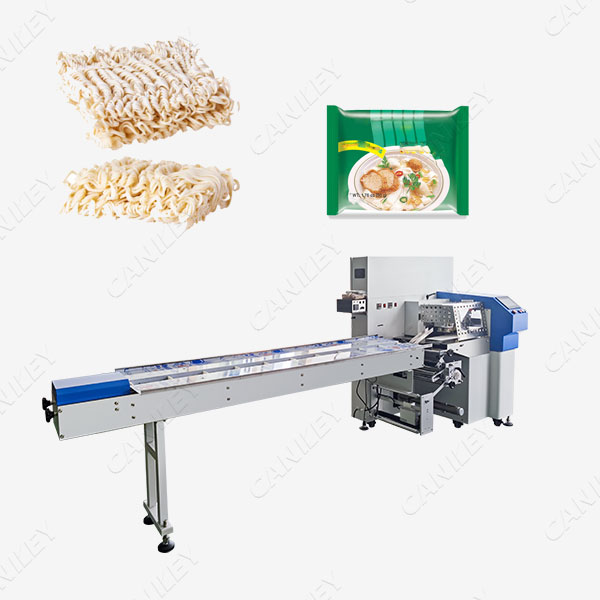Horizontal flow wrap machines play a crucial role in the packaging industry, providing efficient and reliable solutions for wrapping a wide range of products. These machines are commonly used for packaging items such as food products, pharmaceuticals, and consumer goods. Understanding the working principle of horizontal flow wrap machines is essential for optimizing their performance and ensuring the quality of packaged products. But do you know what is the working principle of horizontal flow wrap machine?

Basic components:
- Product feeding system: The process begins with the product feeding system, where the items to be wrapped are placed on a conveyor belt or other feeding mechanism. The speed and precision of this system are critical for the overall efficiency of the packaging process.
- Film unwinding: The packaging material, usually a roll of flexible packaging film, is unwound and guided through the machine. The film serves as the wrapping material that will enclose and protect the product.
- Film forming and sealing: The horizontal flow wrap machine forms the packaging material into a tube around the product. The edges of the film are sealed to create a continuous, sealed package. The sealing process is often achieved using heat or pressure, depending on the type of packaging material.
- Product detection and registration: Sensors are employed to detect the position and size of the product as it moves along the conveyor. This information is crucial for accurately forming and sealing the packaging around the product.
- Cutting mechanism: Once the film is wrapped around the product, a cutting mechanism is activated to separate individual packages. The cutting process must be precise to ensure uniform and clean cuts, preventing damage to the product or the packaging.
- End sealing: In addition to the continuous sealing along the length of the package, the horizontal flow wrap machine typically includes end-sealing mechanisms. These create seals on both ends of the package, ensuring complete enclosure of the product.
- Discharge conveyor: After the packaging process is complete, the wrapped products are transferred to a discharge conveyor. This conveyor may be inclined or flat, depending on the specific requirements of the packaging line.
Working principle:
- Film transport: The packaging material is continuously unwound from the roll and transported through the machine. The speed and tension of the film are carefully controlled to ensure proper wrapping and sealing.
- Product positioning: The product feeding system positions the items on the conveyor in a controlled manner, allowing for accurate wrapping and sealing.
- Film forming and sealing: As the product moves through the machine, the packaging material is formed into a tube around it. Sealing mechanisms apply heat or pressure to create strong and secure seals along the length and ends of the package.
- Cutting and discharge: The cutting mechanism separates individual packages, and the wrapped products are discharged onto the conveyor for further processing or packaging.
Horizontal flow wrap machines are versatile and widely used in various industries due to their efficiency and flexibility. Understanding the working principles of these machines is essential for manufacturers and packaging professionals to optimize their usage, enhance productivity, and ensure the integrity of the packaged products.
